CSM KENNETH “ROCK” MERRITT, A LEGENDARY PARATROOPER
- By Stavros Atlamazoglou
Share This Article
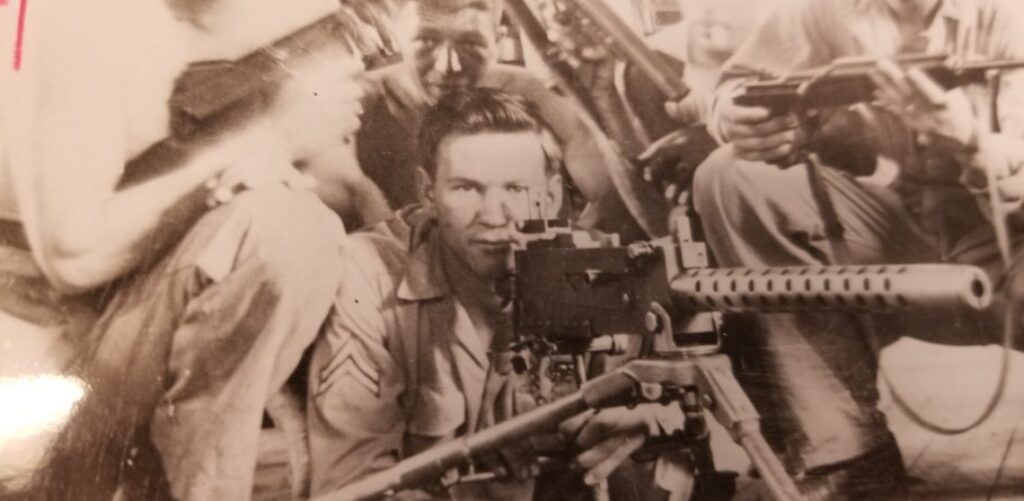
If you ever visit Fort Bragg and the headquarters of the 18th Airborne Corps, you’re bound to hear someone talk or see something about Command Sergeant Major Kenneth “Rock” Merritt, a legendary paratrooper who dedicated 35 years of his life to service for America.
CSM Merritt fought in World War Two as a paratrooper and saw heavy action in all the major operations of the Western Front. He jumped into Normandy on D-Day, participated in the airborne assaults during Operation Market Garden, and also fought the last German offensive in the West during the Battle of the Bulge.
But CSM Merritt hadn’t had enough action, and he continued his service after the war, later deploying to Vietnam. He is the only Soldier to serve twice as the First Command Sergeant Major of the 18th Airborne Corps and one of the few to be allowed to serve for 35 years.
And everything began because of a poster with a cheeky question.
An Unexpected Paratrooper
Born in 1923 in Warner, Oklahoma, Merritt enlisted in the Civilian Conservation Corps, a public work relief program, to support his family. But when the Japanese attacked Pearl Harbor and pulled the U.S. into the quagmire of World War Two, Merritt left the Civilian Conservation Corps and started working construction on military projects for the Army and Navy.
Then, almost a year later, in October 1942, Merritt decided to enlist.

Merritt didn’t intend to enlist in the Army, preferring the Marines instead because he had seen a recruitment poster and liked the Marine Corps’ crispy uniforms. But on his way to the Marine Corps recruiter, CSM Merritt saw an Army poster touting Airborne service with the caption “Are You Man Enough to Fill These Boots?†The young lad was intrigued and went in the Army recruiter first, who promised him $50 per month if he enlisted. CSM Merritt was on his way to basic training the next day.
Related: CABANATUAN: THE BIGGEST SPECIAL OPERATIONS RAID IN HISTORY
After weeks of intense training in the U.S. and Great Britain, CSM Merritt was ready to fight fascism on the European continent. He was assigned to the 1st Battalion, 508th Parachute Infantry Regiment as the squad leader of a light machine gun section and made responsible for supporting other squads with effective fire.
But he and his mates still didn’t know where they would fight.
Jumping on D-Day
The parachute landings in France during D-Day were full of blood and heroism. Close to 1,000 planes and gliders dropped thousands of (mainly) American and British paratroopers behind the German lines with the task of capturing strategic features and stalling enemy reinforcements that were heading to the beaches where the main invasion would be taking place.
Although the troops knew that something big was coming, they didn’t know when they would be getting into the action. And as always is the case, the waiting is worse than the actual event.
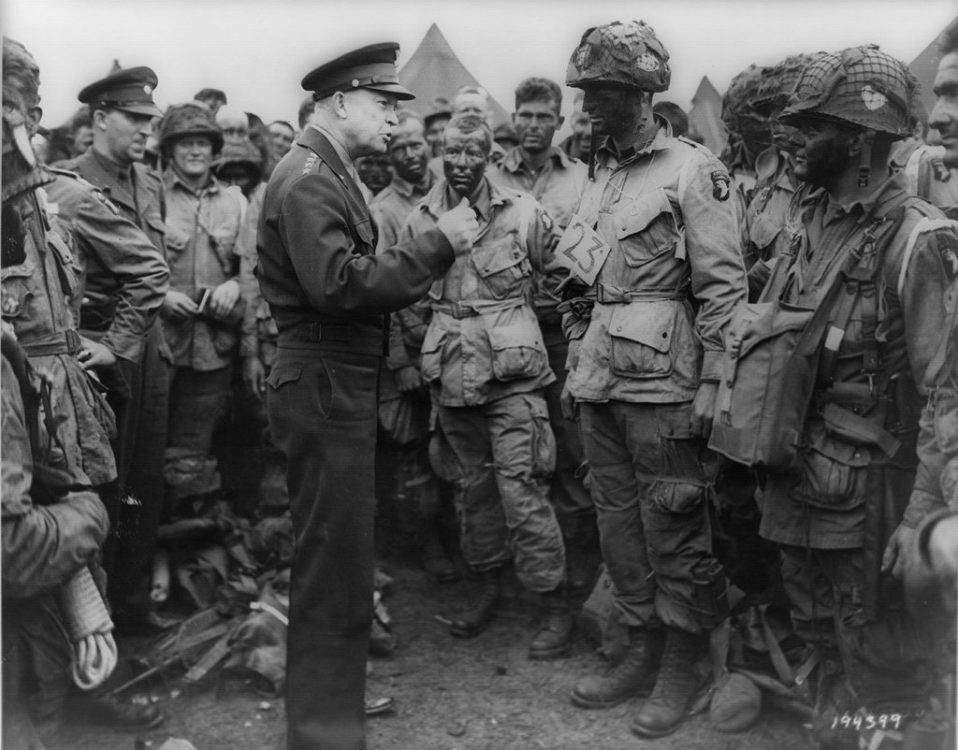
“On June 5, we had a steak dinner and were watching a movie in the hangar, when we were told to fall out, and blacken our faces—we were on our way!†CSM Merritt recalled during an oral history interview.
“Just before we boarded the aircraft, we were told our destination was Normandy, France, and each noncommissioned officer was issued a silk map of France; and everyone was given 5 – 10 dollars’ worth of francs.â€
CSM Merritt’s stick of paratroopers was part of a 40-aircraft convoy. However, only the leading aircraft had a radar system, and when the Germans started pouring hot and heavy anti-aircraft fire into the summer night, the lead plane banked to safety and lost the others. The pilot in CSM Merritt’s C-47 Dakota was lost, but the paratroopers were aching to get off the flying coffin and jump anyway.
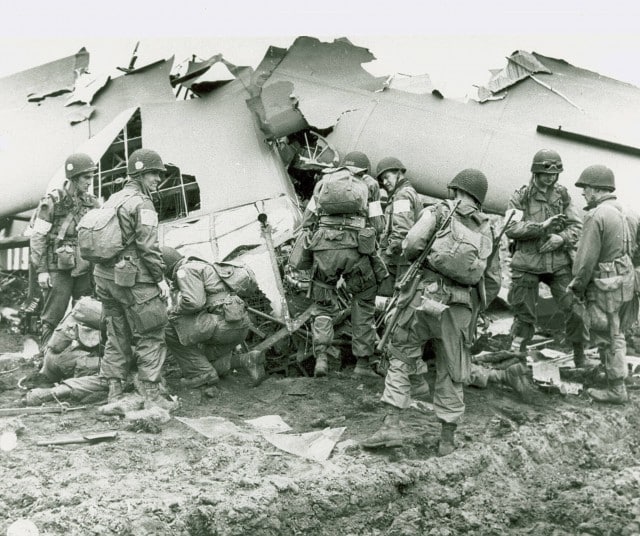
“My jumpmaster went up to see the pilot, and the pilot said ‘I’m lost. I can’t find your drop zone,'” CSM Merritt recalled during a speech to West Point cadets.
“[My jumpmaster] said, ‘Are you over France? I’m going back to the door. When I get back, give me the green light and we’re going to jump.’ Well, we did jump.”
After his platoon hit the ground, they discovered that they were totally lost, a reality that dawned on most Allied paratroopers during D-Day.
Related: THE SPECIAL OPERATIONS THAT PAVED THE WAY FOR D-DAY
In the following days, the Allied paratroopers fought tooth and nail against the Germans, achieving some of their goals, while missing others. But they did manage to prevent the Germans from reinforcing the beach landings, so their contribution overall was important. During this fighting, CSM Merritt distinguished himself by personally destroying a German machine gun nest that had pinned down his unit.
For his actions, CSM Merritt received the Silver Star, the nation’s third-highest award for valor under fire, personally from General Matthew Ridgway, commanding general of the 82nd Airborne Division and later Chief of Staff of the Army.
CSM Merritt went on to fight in Operation Market Garden, the largest airborne operation in U.S. history, and in the Battle of the Bulge, a last-ditched attempt by the Germans to turn the tables on the West.
Soldier For Life
After the war, he opted to stay in the Army and went on to serve in Vietnam, finally retiring in 1975. By the time he hung up his uniform, he had 200 static-line parachute jumps and had been nominated thrice for the position of Sergeant Major of the Army, the highest enlisted rank in the Army.
Throughout his service, CSM Merritt was a paratrooper and non-commissioned officer role model, often going out of his way to mentor the younger generations of Soldiers.
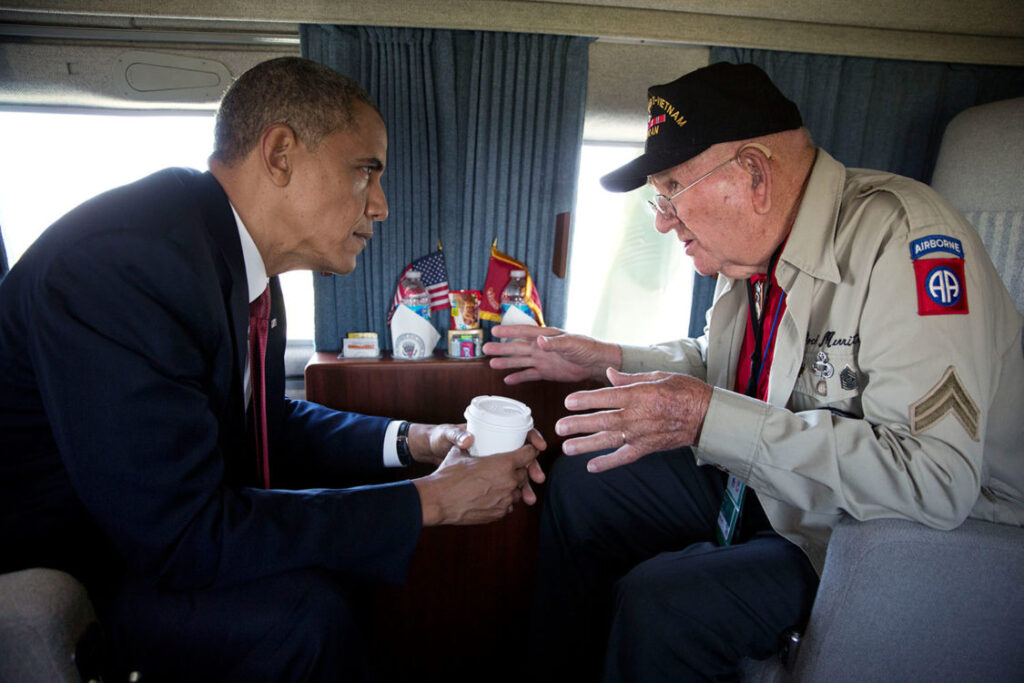
In 2014, CSM Merritt was chosen to represent America in the celebrations marking the 70th anniversary of D-Day. And, as if he hadn’t already earned so many honors, CSM Merritt received the title of Honorary Sergeant Major of the Army.
On March 10, 2021 CSM Merritt passed away at the age of 98. His old command and the base in which he spent most of his life celebrated the man and his accomplishments with a short but moving statement.
“We certainly know Rock did his duty here on Earth, not only in WWII and Vietnam, but also in his service to our Soldiers on Fort Bragg,†the 18th Airborne Corps and Fort Bragg stated in social media post.
“For many, his investment in our Soldiers will serve as his legacy. Every change-of-command, every All American Week, every big event, Rock was there. He met every Paratrooper, he shook every Soldier’s hand. He will be deeply missed.â€
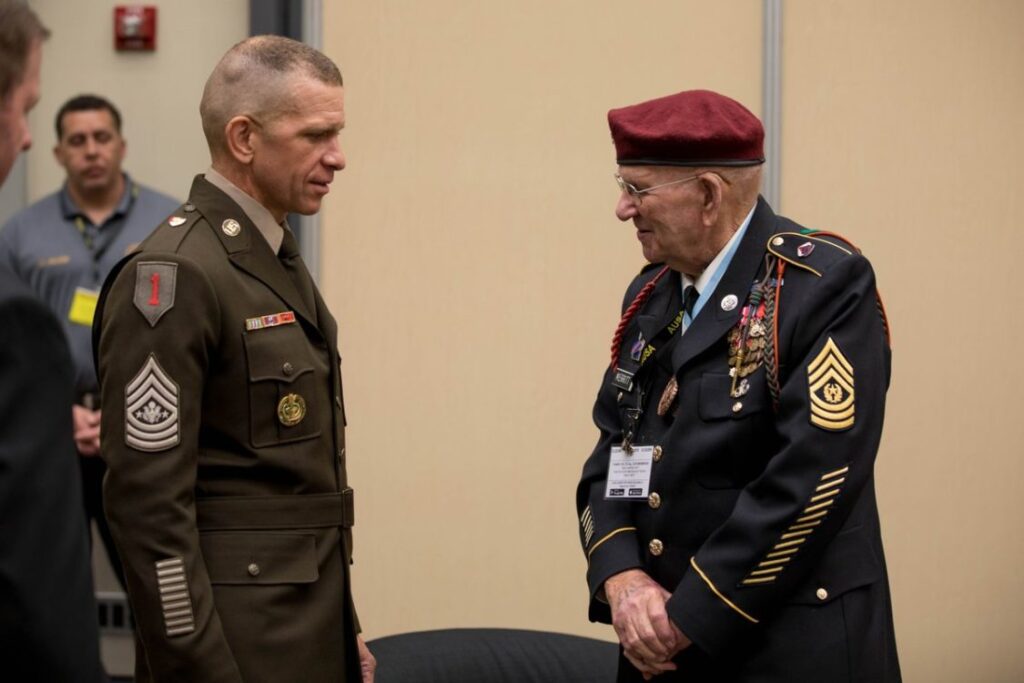
Related: MACV-SOG, THE COVERT SPECIAL OPERATIONS UNIT YOU’VE NEVER HEARD OF
In 2018, he was honored with a paver stone by the Airborne and Special Operations Museum at Fort Bragg. During the ceremony, an old but strong-willed CSM Merritt offered some moving words from the perspective of a combat veteran of many a battle.
“In the confusion in the world going on today, we have so much to be proud and thankful for. Number one, our armed forces today are led by the best trained, best equipped, best educated officers, noncommissioned officers and soldiers that the Army has ever had. Number two, we live in the best country in the world, the United States of America. Last, but certainly not least, we’ve been able to have two hundred and forty some odd years with our freedom all due to soldiers like you standing here today.â€
Young American paratroopers today take great pride and inspiration knowing that they are following in the footsteps of giants.
Related Posts
Sandboxx News Merch
-

‘AirPower’ Classic Hoodie
$46.00 – $48.00 Select options This product has multiple variants. The options may be chosen on the product page -

‘Sandboxx News’ Trucker Cap
$27.00 Select options This product has multiple variants. The options may be chosen on the product page -

‘Kinetic Diplomacy’ Bumper Sticker (White)
$8.00 Add to cart
Stavros Atlamazoglou
Greek Army veteran (National service with 575th Marines Battalion and Army HQ). Johns Hopkins University. You will usually find him on the top of a mountain admiring the view and wondering how he got there.
Related to: Military History, Special Operations
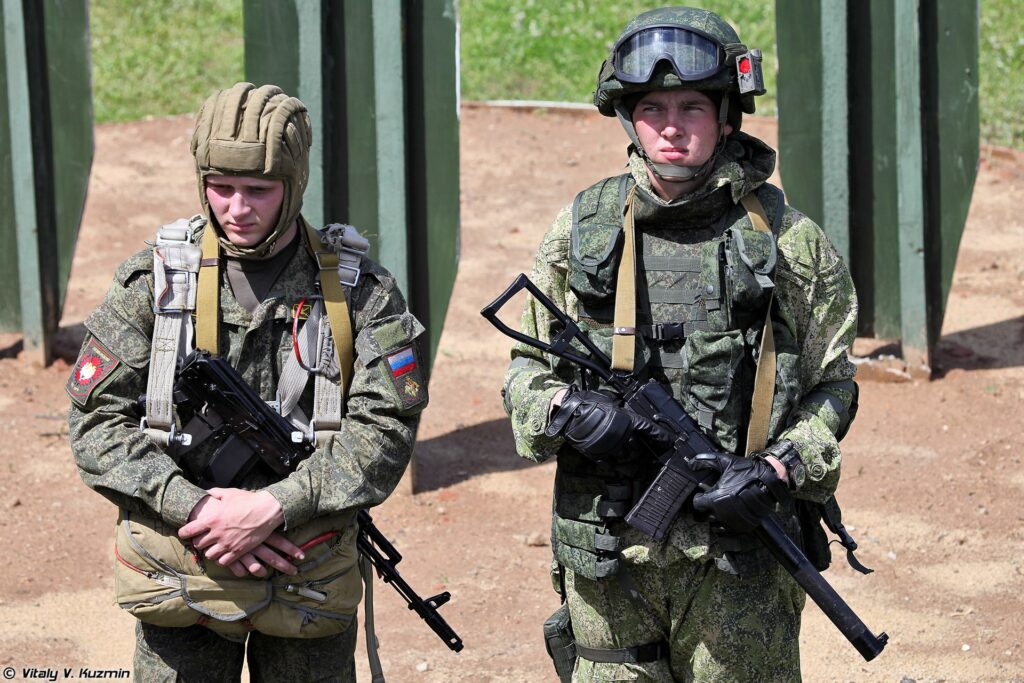
Russia has been suffering huge casualties but this shouldn’t matter
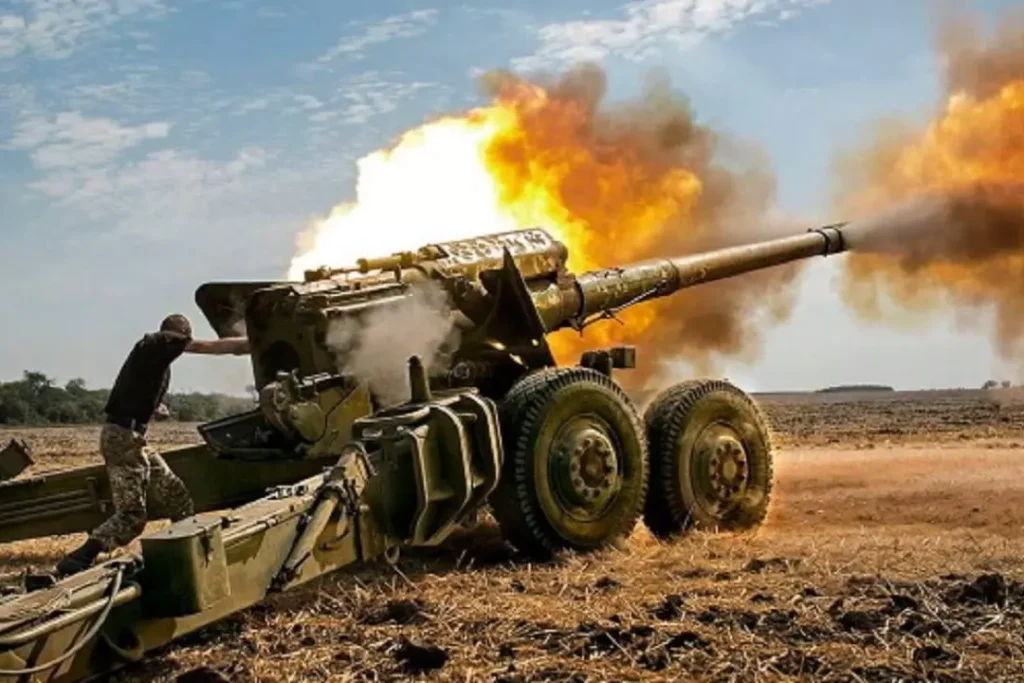
Ukraine is much better at combined arms operations than Russia
Sandboxx News
-

‘Sandboxx News’ Trucker Cap
$27.00 Select options This product has multiple variants. The options may be chosen on the product page -

‘AirPower’ Classic Hoodie
$46.00 – $48.00 Select options This product has multiple variants. The options may be chosen on the product page -

‘AirPower’ Golf Rope Hat
$31.00 Select options This product has multiple variants. The options may be chosen on the product page -

‘Sandboxx News’ Dad Hat
$27.00 Select options This product has multiple variants. The options may be chosen on the product page
